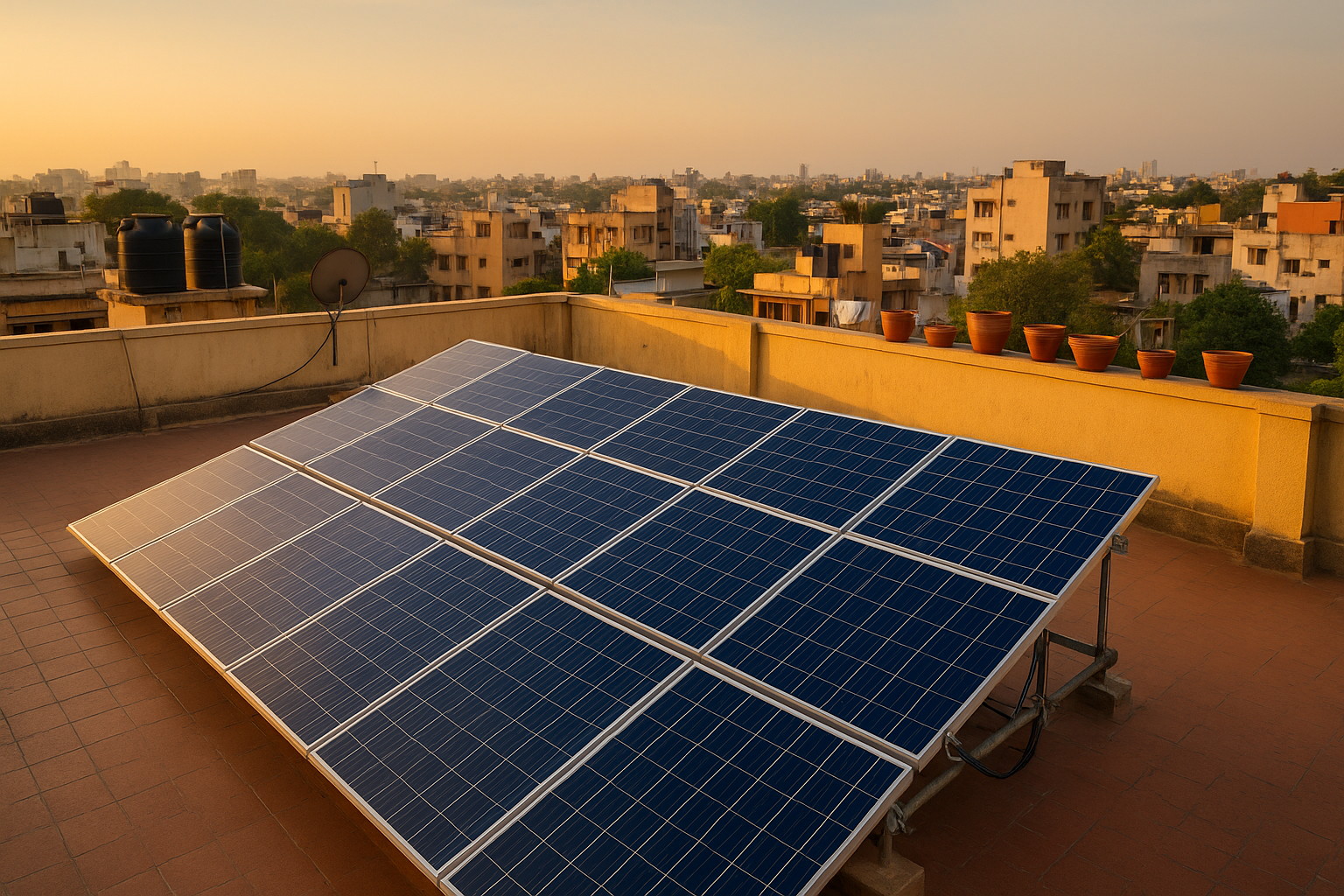1) Scheme at a glance (2025)
- Name: PM Surya Ghar: Muft Bijli Yojana
- Who can apply: Residential consumers with a valid DISCOM connection
- What you get: Central subsidy (CFA) on rooftop systems, up to the 3 kW slab
- Target & timeline: 1 crore homes; programme underway through FY 2026-27
- Apply: National Rooftop Portal (DISCOM-linked flow; vendor + feasibility + net meter + inspection)
2) Central subsidy (CFA) slabs
For most states (general category), the current CFA slabs are:
| Band | Subsidy | Example |
|---|---|---|
| Up to 2 kW | ₹30,000 per kW | 2 kW → ₹60,000 |
| Next 1 kW (2–3 kW) | ₹18,000 per kW | 3 kW → ₹78,000 (cap) |
| > 3 kW | No additional CFA | 5 kW → still ₹78,000 |
Special-category states/UTs (e.g., some Himalayan / North-East states, J&K, Ladakh, A&N, Lakshadweep) have slightly higher slabs for the same capacity bands. Your vendor/portal will show the applicable rate.
3) Eligibility & documents
Who qualifies?
- Residential consumer with a valid electricity connection (DISCOM)
- Grid-connected rooftop/balcony system within DISCOM limits
- DCR compliance mandatory for CFA (India-made cells and modules)
- BIS-compliant inverter required; CFA is computed on DC module capacity
- One-time CFA per household (upgrades possible only up to the 3 kW cap)
Document checklist
- Latest electricity bill; CA/Consumer No.
- KYC (Aadhaar etc.) as required by your DISCOM/portal
- Bank details for DBT
- Roof ownership/consent (e.g., RWA/NOC if applicable)
- Shadow-free roof photos (helpful during survey)
4) Step-by-step: How to apply
- Register on the National Rooftop Portal using DISCOM + CA/Consumer number.
- Choose empanelled vendor from the list; compare quotes, confirm DCR modules and BIS inverter, lock capacity (kW).
- Feasibility approval: Vendor submits design; DISCOM grants technical feasibility.
- Install + Net meter: Structure + modules + inverter + AC/DC protections; apply for net meter.
- Inspection & Commissioning: DISCOM inspects and uploads commissioning report.
- DBT subsidy credit: Post portal verification, the subsidy is transferred to your bank.
5) Costs & ROI (illustrative)
Assumptions vary by city, sun hours, tilt/shading, tariff and DISCOM net-metering rules. These are indicative numbers to help planning.
3 kW system (popular)
- Indicative gross cost: ₹1.8–2.1 lakh
- Central subsidy: ₹78,000 (cap reached)
- Net outlay: ~₹1.0–1.3 lakh
- Monthly generation: ~330–400 units
5 kW system (larger homes / EV)
- Gross cost: ₹3.0–3.5 lakh | CFA: ₹78,000
- Net outlay: ~₹2.2–2.7 lakh
- Monthly generation: ~550–700 units
7.5 kW system (villa/duplex)
- Gross cost: ₹4.5–5.5 lakh | CFA: ₹78,000
- Net outlay: ~₹3.7–4.7 lakh
- Monthly generation: ~825–1,000 units
6) State top-ups & net metering
Central CFA is uniform, but a few states/UTs periodically add state top-ups. These change from time to time; check your state DISCOM/energy department page for the latest notification.
- State top-ups: announce-withdraw cycles are common; verify before finalizing capacity.
- Net metering rules: application flow, caps and charges are state-regulated; vendor will align your design accordingly.
Tip: If a state top-up is active for 3 kW, that’s often the best value band because central CFA also maxes out at 3 kW.
7) Quality, warranty & compliance
- DCR (Domestic Content Requirement): India-made cells & modules mandatory for CFA eligibility.
- Inverter: BIS-compliant; ensure surge protection, earthing and proper AC/DC DBs.
- Structure: Hot-dip galvanized steel/aluminium, wind-load tested, proper anchoring.
- Warranties: Modules (25-yr performance typical), inverter (5–10 yr), workmanship (1–5 yr).
- O&M: Quarterly cleaning and annual electrical checks maintain performance.
8) Common mistakes to avoid
- Non-DCR modules → CFA rejection.
- No shading analysis → poor output.
- Only the lowest price → weak structure/service; pick a reputed vendor.
- Paperwork delays → feasibility, metering and inspection timelines slip.
- Over/under-sizing capacity → size as per actual monthly consumption.
